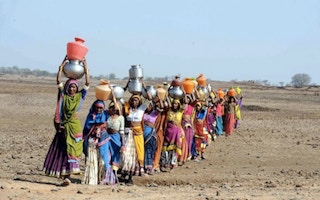As thousands of villages in central India face crippling water shortages, sugar plantations, vineyards and factories continue to tap illegal wells.
There is no water in 7,075 villages in the middle of India. In March, just the start of the Indian summer of 2013, millions of people are being supplied water by over 2,400 tankers. Officials say come April, and they will have to charter trains and fetch water from other parts of the country. But in the same belt, there is no crippling water shortage for sugar plantations and mills, vineyards, orange orchards or factories.
South Asia is crucially dependent on the June to September monsoon, which provides over 80% of its annual rainfall. In the last monsoon, the total rainfall for all of India was 92% of its long period average.
The villages and towns now facing water shortage are in the country’s western state of Maharashtra, whose capital is also India’s financial capital Mumbai. Of the 34 districts in the state, 15 are facing water shortage. The worst affected districts are Solapur, Ahmednagar, Sangli, Pune, Satara, Beed and Nashik, while the situation is also serious in Buldhana, Latur, Osmanabad, Nanded, Aurangabad, Jalna, Jalgaon and Dhule districts.
Click here to read the full story.










